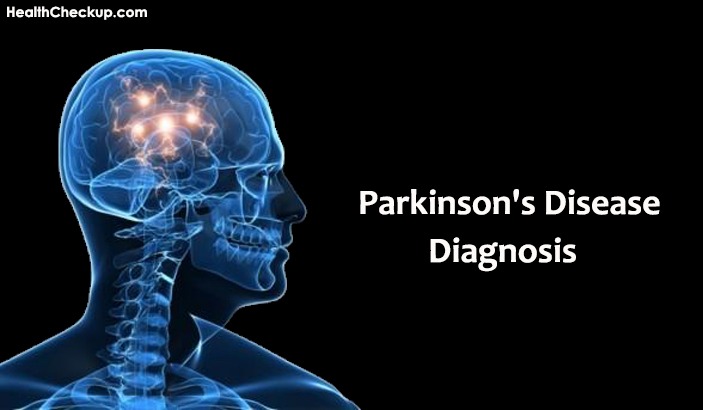Parkinson’s disease is a complex neural ailment that has roots in genetics. This is a progressive disorder that wrecks havoc with human nervous system. The symptoms are varied at times, detecting the symptoms can be quite hard. This makes Parkinson’s Disease diagnosis is quite hard even for doctors. Imaging tests do not work well for its diagnosis. However, special blood tests and specific tests are carried out for diagnosis. Post diagnosis, the victims can benefit from family support and specific therapies, based on the conditions. Treatments are aimed at reducing intensity of symptoms and their complications.
There are quite a number of ailments that affect the human nervous system and wrecks havoc with cognitive abilities and disrupts life. Parkinson’s disease is one such ailment. It affects the human brain and leads to loss of muscle control in a gradual manner. The movement disorder occurs when the nerve cells in the brain do not generate a chemical called dopamine. Its major symptoms are slow movement, muscle stiffness, impaired balance and shaking, but the symptoms are sometimes overlooked and Parkinson’s disease diagnosis can be tricky. The real cause is yet to be discovered, but genetics play a major role. Sadly, there is no cure for this ailment, but treatment is focused on managing the symptoms, mostly.
Ways to Diagnose Parkinson’s Disease
The truth is, diagnosing this neural disorder can be pretty tricky. The medical community agrees there is no single conclusive test that can be used to detect its presence in a person. The diagnosis varies on factors like medical history, symptoms and physical characteristics, etc. In many cases, proper diagnosis remains a challenge since the symptoms can be mild. Some people also exhibit secondary symptoms like sexual dysfunction, difficulty in talking and eating foods, etc. Not all symptoms are seen in all victims of the disease. The progression of symptoms can vary widely in the affected lot as well. Some victims develop major symptom rapidly while in some others, the symptoms go undetected for a long time. However, in all cases the symptoms gradually worsen over time.
When a GP suspects you have got Parkinson’s disease, he or she will refer you to a specialist. The specialist could be a neurologist. The specialist may ask you to do certain exercises for proper Parkinson’s disease diagnosis. If your suspected symptoms show signs of improvement after using a medication named levodopa, the conclusion could be that you have got afflicted with the ailment. Sadly, the diseases cannot be diagnosed using standard radiology based scans and tests like MRI and X ray.
Major Methods for Parkinson’s Disease Diagnosis
Below listed are the most common and major tests carried out for detecting this disorder in humans:
- Major Parkinson’s tests include special brain scans like single photon emission computed tomography.
- Besides, blood test for Parkinson’s disease is also carried out at times. These tests help determine damage to the liver as well as irregular thyroid functioning.
- Sometimes, giving specific medication and observing its impact is also used for Parkinson’s disease diagnosis. However, this method is not effective for all victims.
- PET imaging test is also carried out, but it is not always reliable and can be pretty expensive too.
The need for conducting tests is decided by the doctors and not all victims are made to undergo all of these tests.
Life After Diagnosis
Being told that you have been diagnosed with Parkinson’s disease can be quite stressful. However, proper diagnosis and treatment can help you live with fewer hardships and enjoy improved quality of life. Family and friends can come forward for assistance and give mental support.
Treatment Options for Those Diagnosed with Parkinson’s Disease
It is true that Parkinson’s disease cannot be cured and its symptoms worsen progressively. However, there are instances of plenty of men and women afflicted with this disorder living life without being bound to wheelchair all the time.
The Treatment Options Include:
Medications:
The dopamine based drugs and Levodopa are given to the majority of patients.
Home Care:
For a majority of people with Parkinson’s disease, this is what matters the most. Trying out specific exercises also helps a lot.
Special Therapies:
For people in advanced stages, opting for speech therapy can be helpful. To help the victims remain independent, occupational therapies can also be of use.
Counseling:
Since a number of people affected by this disorder develop depression, counseling and psychotherapy can also be sought.
Summing it Up
Parkinson’s disease is a complex neural disorder that affects a significant section of human population across the globe. It is not curable, but with time several treatment options have cropped up most of which focus on treating the symptoms and managing their severity. Despite advancements in medical science, Parkinson’s disease diagnosis remains a challenge for the doctors till date. This is mostly owing to the fact, the symptoms are varied and in many cases tend to be mild. Detecting the symptoms and diagnosing the disorder in time is not always possible. However, a combination of tests including specific blood tests, photon emission computed tomography and PET imaging test are tried by doctors.
Medically Reviewed By

Maanasi specializes in health topics including diet and nutrition. A mother of an untiring seven year old, she enjoys nurturing her love affair with English. She is often found nestled with a book, plopped against a dozen pillows, smiling away at the brink of finishing yet another book of the many dozens, that adorn the shelves of her Mini Library!









